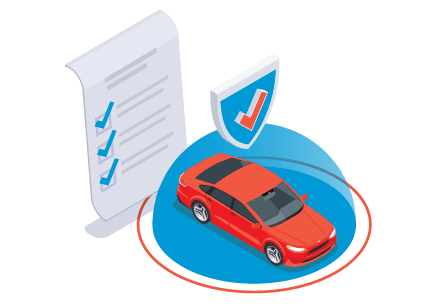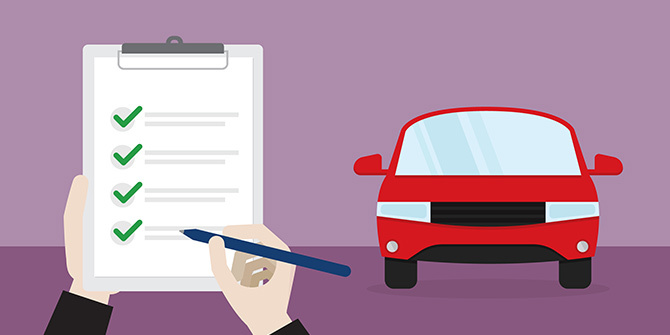CONNECT WITH A SHERPA FOR
AUTO INSURANCE QUOTES
Our Policy Sherpas are here to help you find the right carrier with the best rates for your Auto Insurance needs. Click on the button below to find an Insurance agent who can help you get the right policy for your needs!
CONNECT WITH
A SHERPA FOR
AUTO INSURANCE QUOTES
Our Policy Sherpas are here to help you find the right carrier with the best rates for your Auto Insurance needs. Click on the button below to find an Insurance agent who can help you get the right policy for your needs!

SPEAK TO A POLICY SHERPA
ABOUT YOUR AUTO INSURANCE OPTIONS
Auto Insurance is essential for providing financial protection in case of accidents or damages to your vehicle, helping to cover repair costs and potential liability expenses. It also offers legal compliance, as most jurisdictions require drivers to have auto insurance to operate their vehicles on public roads. Let us direct you today with a customized quote from one of our Policy Sherpas.
SPEAK TO A POLICY SHERPA
ABOUT YOUR AUTO INSURANCE OPTIONS
Auto Insurance is essential for providing financial protection in case of accidents or damages to your vehicle, helping to cover repair costs and potential liability expenses. It also offers legal compliance, as most jurisdictions require drivers to have auto insurance to operate their vehicles on public roads. Let us direct you today with a customized quote from one of our Policy Sherpas.


UNDERSTANDING YOUR AUTO INSURANCE OPTIONS
Auto insurance is a crucial aspect of responsible car ownership. It not only provides financial protection in the event of accidents but also ensures compliance with legal requirements in many countries. However, navigating the various insurance options and policies available can be daunting. This article aims to demystify auto insurance by providing a comprehensive guide to understanding the different options and policies it offers.
LIABILITY INSURANCE
Liability insurance is the most basic and mandatory form of auto insurance in most places. It covers bodily injury and property damage caused to others in an accident where you are at fault. This policy does not cover damages to your own vehicle. The coverage is typically split into two categories: bodily injury liability and property damage liability. When purchasing liability insurance, you’ll see coverage limits expressed as two numbers (e.g., 50/100/50). The first number represents the maximum coverage for bodily injury per person, the second for total bodily injury coverage per accident, and the third for property damage coverage per accident.
COLLISION COVERAGE
Collision coverage pays for damages to your vehicle resulting from a collision with another vehicle or object, regardless of fault. This policy is particularly useful for newer cars or valuable assets that may require costly repairs or replacement. However, collision coverage is usually subject to a deductible, which is the amount you must pay out of pocket before the insurance kicks in.
COMPREHENSIVE COVERAGE
Comprehensive coverage provides protection against damages to your vehicle from non-collision incidents such as theft, vandalism, natural disasters, or animal collisions. Like collision coverage, comprehensive insurance also has a deductible. Combining collision and comprehensive coverage is often referred to as “full coverage.”
PERSONAL INJURY PROTECTION (PIP)
Personal Injury Protection (PIP) is also known as “no-fault insurance” in some regions. PIP covers medical expenses, lost wages, and related costs for you and your passengers regardless of who is at fault in an accident. The coverage limits and eligibility criteria vary by state or country.
UNINSURED/UNDERINSURED MOTORIST COVERAGE
This type of coverage protects you if you are involved in an accident with a driver who doesn’t have insurance or has insufficient coverage to pay for the damages. It can also apply to hit-and-run incidents where the at-fault driver cannot be identified.
MEDICAL PAYMENTS (MEDPAY)
MedPay covers medical expenses for you and your passengers, regardless of fault. Unlike PIP, MedPay does not cover lost wages or other related costs.
GAP INSURANCE
Gap insurance is essential for those who lease or finance their vehicles. If your car is totaled in an accident, gap insurance covers the difference between the actual cash value of the vehicle and the remaining balance on your lease or loan.
UNDERSTANDING YOUR AUTO INSURANCE OPTIONS
Auto insurance is a crucial aspect of responsible car ownership. It not only provides financial protection in the event of accidents but also ensures compliance with legal requirements in many countries. However, navigating the various insurance options and policies available can be daunting. This article aims to demystify auto insurance by providing a comprehensive guide to understanding the different options and policies it offers.
LIABILITY INSURANCE
Liability insurance is the most basic and mandatory form of auto insurance in most places. It covers bodily injury and property damage caused to others in an accident where you are at fault. This policy does not cover damages to your own vehicle. The coverage is typically split into two categories: bodily injury liability and property damage liability. When purchasing liability insurance, you’ll see coverage limits expressed as two numbers (e.g., 50/100/50). The first number represents the maximum coverage for bodily injury per person, the second for total bodily injury coverage per accident, and the third for property damage coverage per accident.
COLLISION COVERAGE
Collision coverage pays for damages to your vehicle resulting from a collision with another vehicle or object, regardless of fault. This policy is particularly useful for newer cars or valuable assets that may require costly repairs or replacement. However, collision coverage is usually subject to a deductible, which is the amount you must pay out of pocket before the insurance kicks in.
COMPREHENSIVE COVERAGE
Comprehensive coverage provides protection against damages to your vehicle from non-collision incidents such as theft, vandalism, natural disasters, or animal collisions. Like collision coverage, comprehensive insurance also has a deductible. Combining collision and comprehensive coverage is often referred to as “full coverage.”
PERSONAL INJURY PROTECTION (PIP)
Personal Injury Protection (PIP) is also known as “no-fault insurance” in some regions. PIP covers medical expenses, lost wages, and related costs for you and your passengers regardless of who is at fault in an accident. The coverage limits and eligibility criteria vary by state or country.
UNINSURED/ UNDERINSURED MOTORIST COVERAGE
This type of coverage protects you if you are involved in an accident with a driver who doesn’t have insurance or has insufficient coverage to pay for the damages. It can also apply to hit-and-run incidents where the at-fault driver cannot be identified.
MEDICAL PAYMENTS (MEDPAY)
MedPay covers medical expenses for you and your passengers, regardless of fault. Unlike PIP, MedPay does not cover lost wages or other related costs.
GAP INSURANCE
Gap insurance is essential for those who lease or finance their vehicles. If your car is totaled in an accident, gap insurance covers the difference between the actual cash value of the vehicle and the remaining balance on your lease or loan.
CONCLUSION
Auto insurance options and policies can be complex, but understanding them is vital for protecting yourself and your assets. To make an informed decision, carefully assess your needs, budget, and the value of your vehicle. Comparing quotes from multiple insurance providers can also help you find the best coverage at the most competitive rates. Remember that each region may have specific requirements and regulations, so always consult with a licensed insurance professional to tailor a policy that suits your individual circumstances. With the right coverage, you can drive with peace of mind, knowing you are protected in case the unexpected occurs.
